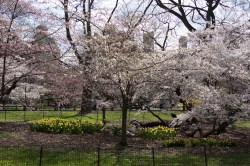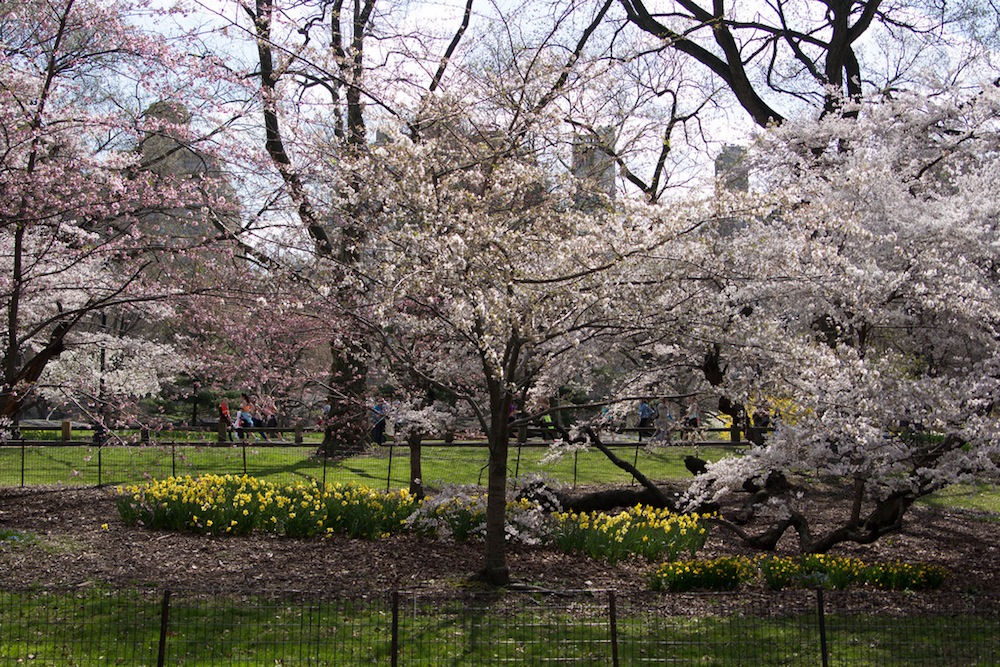
Keith WagnerThese trees in Central Park are doing their arboreal best to save the lives of New Yorkers.
Next time you hug a city-dwelling tree, be sure to whisper quiet thanks for the lives it is helping to save.
Researchers recently calculated that urban forests help save one or more people from dying every year in each of 10 major cities studied.
Trees growing in cities help clean the air of fine particulate air pollution — soot, smoke, dust, dirt — that can lodge in human lungs and cause health problems. Trees clear 71 tons of fine particulate matter (PM2.5) from Atlanta’s air annually. And they suck up enough pollution to save seven or eight lives every year in New York City.
These are the findings of researchers with the U.S. Forest Service and Davey Institute, published in the journal Environmental Pollution [PDF]. They calculated the health and economic benefits of air-cleansing urban forests in 10 U.S. cities and found that trees save lives, reduce hospital visits, and reduce the number of days taken off work. They do that mainly by sucking pollutants out of the air. Economic benefits, mostly from reduced mortality, ranged from $1.1 million a year in Syracuse, N.Y., to $60.1 million a year in New York City.
From a Forest Service press release:
Overall, the greatest effect of trees on reducing health impacts of PM2.5 occurred in New York due to its relatively large human population and the trees’ moderately high removal rate and reduction in pollution concentration. The greatest overall removal by trees was in Atlanta due to its relatively high percent tree cover and PM2.5 concentrations.
And these findings cover only the effects of cleaning up fine particulate pollution. The study didn’t investigate the economic and life-giving benefits of trees sucking up larger soot particles, ozone, sulfur dioxide, nitrogen dioxide, or other types of air pollution.
“This research clearly illustrates that America’s urban forests are critical capital investments helping produce clear air and water; reduce energy costs; and, making cities more livable,” Forest Service researcher Michael Rains said in the press release.
The study comes after some of the researchers’ Forest Service colleagues discovered a correlation between loss of trees and higher human death rates, which they described in the American Journal of Preventive Medicine. As we told you last week, the scientists found that the more trees there are in an area, the less likely people there are to die.
More hugs for trees, please.



